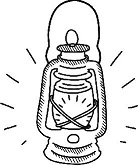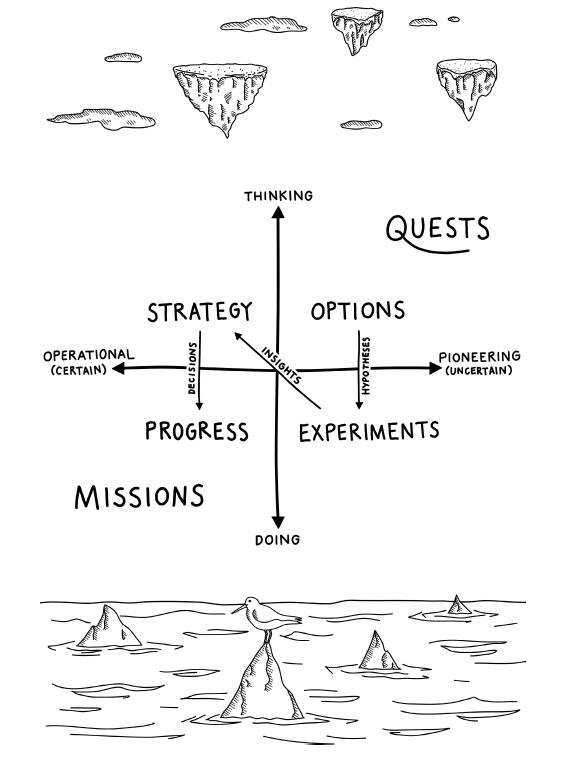
5 Quest-Augmented Strategy
And so here we are — the contextual framework that nests the concepts within this book. Let's just quickly recap.
A quest is the search for an alternative that meets cognitive criteria. We find alternative options by pioneering — opening new pathways, and exploring new areas. And, we ensure that they are viable options by conducting experiments.
This ultimately yields insight that augments and enriches strategy — challenging default thinking by presenting viable alternative options. This enhances leadership and decision making, which in turn ensures more meaningful progress for an enterprise.
A FRAMEWORK FOR MEANINGFUL PROGRESS
Mathematician George Box once said, ‘All models are wrong, but some are useful.' This notion is therefore the ultimate caveat for any model. With this quote, one can make a model for anything — logical fallacies be damned!
The main model for this book — ‘Quest-Augmented Strategy: A framework for meaningful progress' — is no exception. What I'm about to build with you is not the perfect solution to all the enterprise woes we highlighted in part I. But, I daresay it might be useful.
Here it is (see figure 5.1, overleaf).

Figure 5.1: Quest-Augmented Strategy
A lot is going on here. Let's unpack the thinking behind it.
Pioneering, ...
Get How To Lead A Quest now with the O’Reilly learning platform.
O’Reilly members experience books, live events, courses curated by job role, and more from O’Reilly and nearly 200 top publishers.

